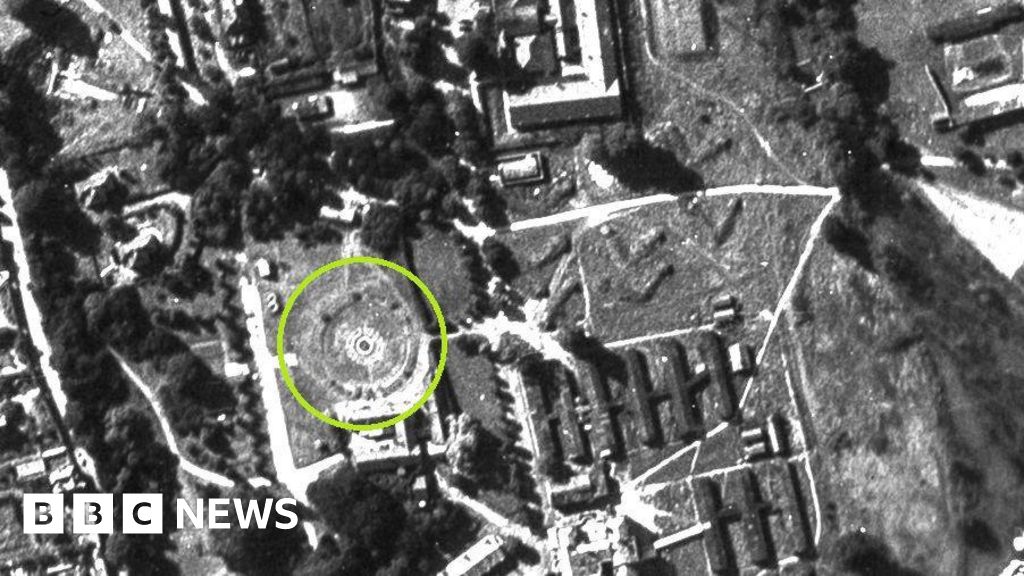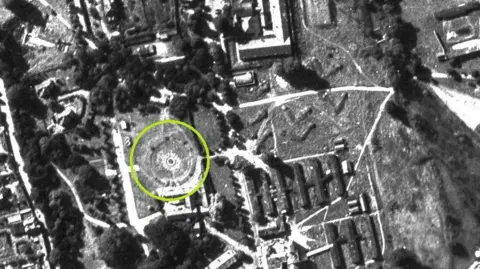 Historic England Archives
Historic England ArchivesA World War Two bunker integral to the Battle of Britain was disguised as a decorative garden, according to researchers.
The bunker was designed to blend in with its surroundings in Uxbridge while concealing its critical role in coordinating Britain’s air defence, researchers have found.
In addition to its disguise, the bunker was fortified with deep layers of earth and concrete to absorb bomb impacts.
It was on a visit to the bunker when wartime prime minister Winston Churchill declared: “Never in the field of human conflict was so much owed by so many to so few”.
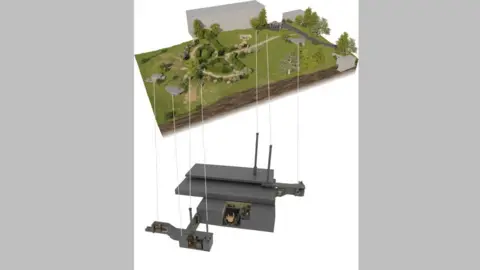 MOLA
MOLAThe fresh discoveries were made during recent conservation work and repairs which enabled an archaeological investigation at the 86-year-old site, Historic England and Museum of London Archaeology (MOLA) said.
Surveys reveal thick earth and concrete layers protected the bunker from aerial hits, while gun pits, pillboxes, and barbed wire defended against ground attacks.
Historic England said the military was responding to a new type of warfare, as airborne raids and the threat of German parachutists being dropped to land and advance on foot became of concern.
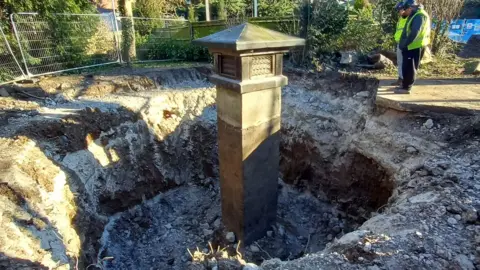 MOLA
MOLAThe bunker was concealed under a faux decorative garden so it would appear to be part of the landscape of the nearby Hillingdon House.
A large Campaign Nuclear Disarmament symbol scratched into a pillbox suggests later peaceful protests at the site, archaeologists found, though it’s unclear if it dates back to the RAF base’s operation.
Jim McKeon, Project Manager at MOLA, said that by integrating archaeological findings, documentary sources, aerial photos, and historic maps, they have gained a clearer picture of what the bunker’s exterior looked like during WWII.
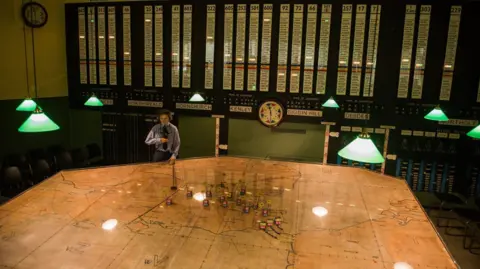 Hillingdon Council
Hillingdon CouncilThe Battle of Britain Bunker and its surrounding facilities now serve as a museum and visitor centre.
Sandy Kidd, an archaeologist at Historic England, said: “London’s archaeology goes back thousands of years, so the Battle of Britain Bunker at 86 years young is one of the most ‘modern’ sites I’ve been involved with.
“We knew that any exploration of the site would need careful understanding of Second World War military tactics and features so that nothing was missed.”
He said the level of defences and concealment of the bunker shows military authorities believed it being compromised would have “spelled disaster for the country”.

